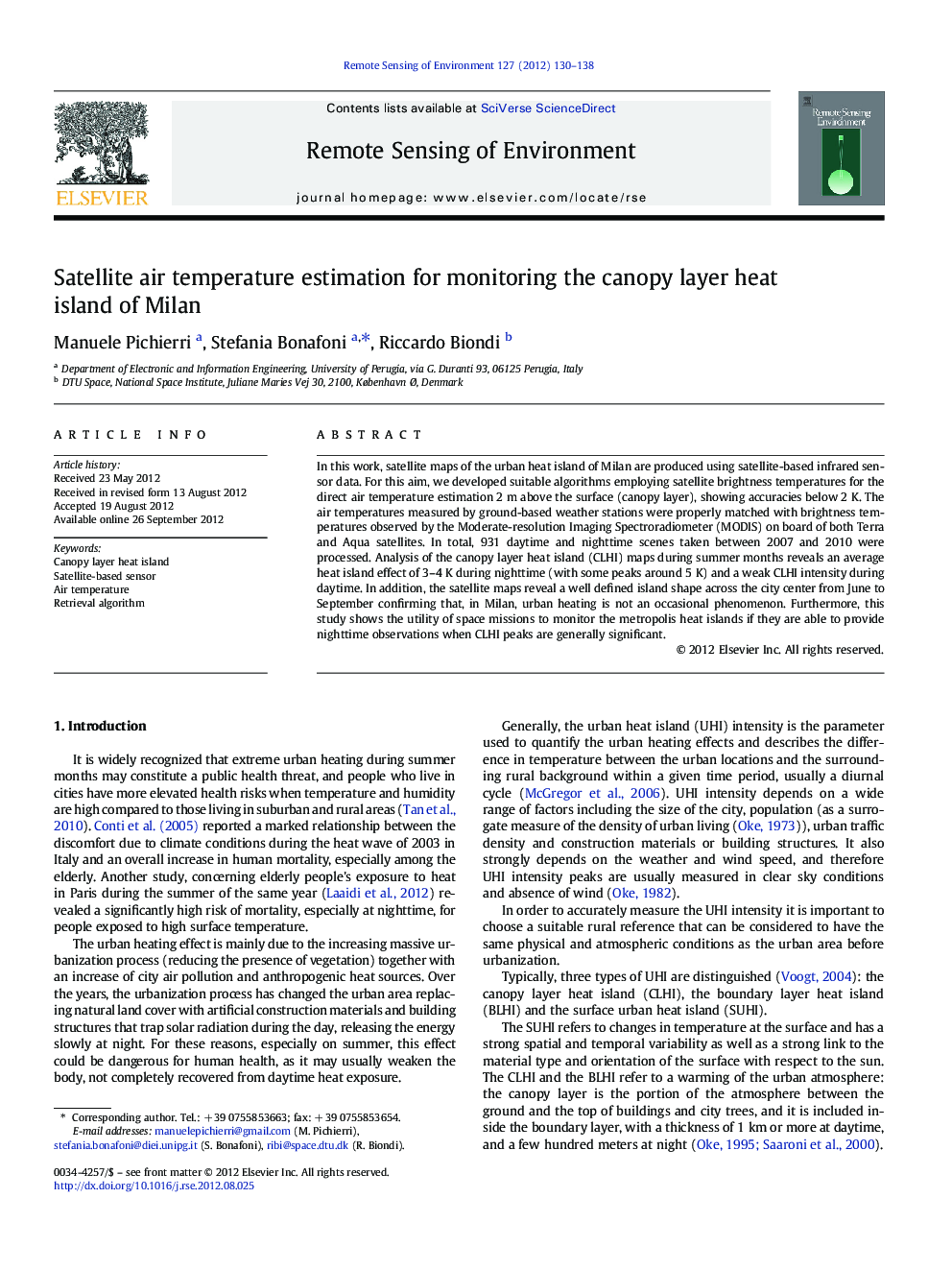| Article ID | Journal | Published Year | Pages | File Type |
|---|---|---|---|---|
| 4459092 | Remote Sensing of Environment | 2012 | 9 Pages |
In this work, satellite maps of the urban heat island of Milan are produced using satellite-based infrared sensor data. For this aim, we developed suitable algorithms employing satellite brightness temperatures for the direct air temperature estimation 2 m above the surface (canopy layer), showing accuracies below 2 K. The air temperatures measured by ground-based weather stations were properly matched with brightness temperatures observed by the Moderate-resolution Imaging Spectroradiometer (MODIS) on board of both Terra and Aqua satellites. In total, 931 daytime and nighttime scenes taken between 2007 and 2010 were processed. Analysis of the canopy layer heat island (CLHI) maps during summer months reveals an average heat island effect of 3–4 K during nighttime (with some peaks around 5 K) and a weak CLHI intensity during daytime. In addition, the satellite maps reveal a well defined island shape across the city center from June to September confirming that, in Milan, urban heating is not an occasional phenomenon. Furthermore, this study shows the utility of space missions to monitor the metropolis heat islands if they are able to provide nighttime observations when CLHI peaks are generally significant.
► Canopy Layer Heat Island (CLHI) maps of Milan are produced from satellite data ► CLHI has been monitored estimating the air temperature at 2 m above the ground ► The retrieval algorithm employs only brightness temperatures at two IR channels ► The air temperature is estimated with an error below 2 K ► CLHI exhibits an average heat island of 3–4 K during nighttime (with peaks of 5 K)
